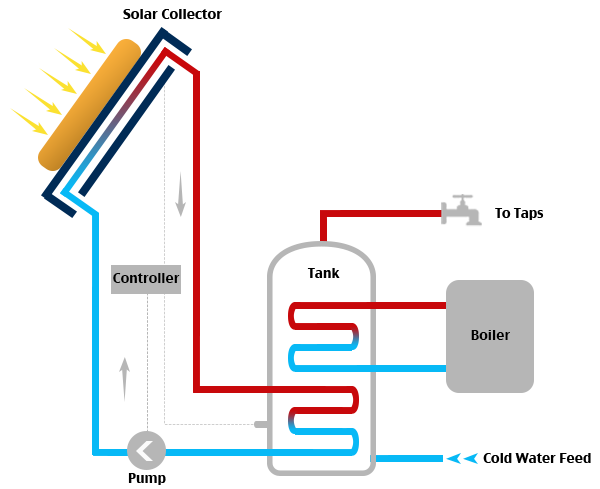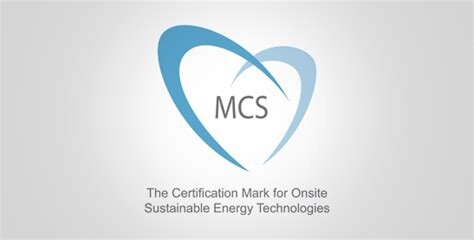Your Guide to Solar Thermal
More energy hits the Earth from the Sun in one hour, than all of the world's inhabitants can use in one year. Solar Thermal technologies convert this energy into useable domestic hot water and space heating for use in our buildings. Such technologies are a key strategy in moving our built assets to a Net Zero Carbon economy.
In this article we outline all of the design considerations to be undertaken when proposing to install a Solar Thermal System to your home or commercial property. Understanding the design parameters, costs, funding and procurement options available is important for any client wishing to consider the installation of such a system.
Context
Given the UK's commitment to reaching Net Zero Carbon by 2040, and Scotland's commitment to 2035, increasingly we are having to consider greener ways of meeting our energy requirements. One of the most challenging energy strategies is in the provision of domestic hot water and space heating. A building can be very thermally efficient, but it still requires to generate hot water for personal hygiene and in some cases to assist with space heating. In Passivhaus design, one of the most challenging design decisions will be in how to heat domestic hot water, whilst remaining within designated energy use parameters. This is equally true of more conventional buildings with increasingly stringent energy use requirements to meet CO2 emissions targets.
How they work
Typically, the main source of heat generation is through roof mounted panels which are used in conjunction with a thermal heat store, boiler, or immersion heater. The solar collector will use the sun’s rays to heat a transfer fluid which is usually a mixture of water and glycol (antifreeze) which prevents the water from freezing. There are two types of collector; evacuated tube collector or a flat plate collector. The heated water from the collectors is pumped to a heat exchanger which would be inside the water tank in your home. The heat from the exchanger will then heat the water inside the tank. After the liquid releases its heat, the water will flow back to the collectors for reheating. A controller will ensure that the fluid will circulate to the collector when there is sufficient heat available. It is important to note that the circuit does not need to heat all of the water in your tank. Simply by reducing the heat load required to bring the thermal store to temperature, your system is optimising energy efficiency.
Planning
The good news is that generally speaking, as long as you do not live in a Conservation Area or a Listed Building, you do not require Planning Permission for the installation of your Solar Thermal System as long as it adheres to the following criteria;
The system must not protrude more than 200mm from the surface of the roof (England & Wales)
Collectors should not be installed above the highest part of the roof
If installed on a flat roof, the collectors must be situated at least 1m from the edge of the roof and protrude not more than 1m from the surface.
If you are in a Conservation Area and/ or a Listed Building, Listed Building consent will be required. Arrays will not be permitted on the face of the building visible from a public road.
Orientation
Contrary to popular belief, the climate in the UK is suitable for the use of Solar Thermal technology. The system is reliant on solar radiation, meaning that cloudy days allow the system to operate. Whilst direct sunlight is ideal, they will work perfectly well on a cloudy day. Solar radiation levels can be checked at http://www.metoffice.gov.uk/renewables/solar which offers a very useful solar irradiation map of the UK. To optimise the efficiency of the system, you must locate it such that it is not overshadowed by adjacent buildings, structures or vegetation. Consider different times of the year also as low sun angles during winter can be significant. Optimal orientation is an unobstructed south facing roof with an inclination of 30 degrees from horizontal, but not essential. The output of panels on south-east or south-west facing roofs may be 10% lower than those that are south facing. East and West facing roofs can result in a 20% drop in efficiency of the system.
Size of system
A typical 3 bedroom house for a family of 4 will require a system of around 4m2. Designed in most cases to meet 100% of a home's domestic hot water demand during the summer months, over the course of an average year a typical system should be expected to provide 50%-60% of domestic hot water needs; the remainder being supplemented typically by electrical immersion heating.
Costs/ Investment return
Generally speaking, at time of writing (Feb 2021) the installation of a Solar Thermal System will cost in the region of £3000 to £5000 dependent on the size of the system. The good news is that there are incentives available to assist with the installation of such systems. The Renewable Heat Incentive (RHI) is an initiative run by the Department for Energy and Climate Change. Targeted at assisting those who install renewable heating systems, the initiative rewards you with a payment for each kilowatt hour of heat produced and used. Presently for domestic installations the tariff paid is 21.09p/kWh for Solar Thermal Systems. This tariff is 'locked in' for 7 years from date of install. This would typically yield around £375 RHI payment per year, and a saving of around £250 on electrical heating costs. The result is around £4375 return over 7 years, practically paying for the system.
There are other sources of incentive also. Home Energy Scotland are offering interest free loans for renewable heating systems as well as up to 75% cashback up to the value of £7,500 towards the cost of the installed system. Similar schemes are also available in England & Wales via the Green Homes Grant. People need to move fast however, as these schemes are on a first come first served basis and can change from financial year to financial year.
MCS accreditation
Solar Thermal systems can be very complex to install. In order to ensure that your system is installed by a reputable company, you must ensure that the installer is MCS Accredited. MCS certifies low-carbon products and installations used to produce electricity and heat from renewable sources. MCS is a standards organisation, creating and maintaining standards that allows for the certification of products, installers and their installations. Indeed, to benefit from the many grants, loans and payments available outlined above, your system must be installed and maintained by an MCS Certified company. In short, MCS Accreditation gives the Consumer reassurance that their system is appropriate and compliant with current standards.
As we increasingly drive towards a net zero carbon economy, the prevalence of solar thermal systems is increasing. As the market has developed, the cost of installation is falling all of the time, whilst the efficiency of the technology is increasing. These systems are also more than capable of being bolted on to existing infrastructure within the home, making them a relatively straight forward energy saving measure. There are also many incentives available to make the technology affordable to people. It all points to a very positive future where we can expect now to install systems that will at the very least supply 50% of annual domestic hot water energy requirements for our home. At Novo, when designing our energy efficient and Passivhaus compliant homes, we regularly have to consider optimising the use of Solar Thermal Systems into the energy strategy of the design. Should you require any assistance in deciding whether Solar Thermal is right for you, please just get in touch by clicking on the button below.





